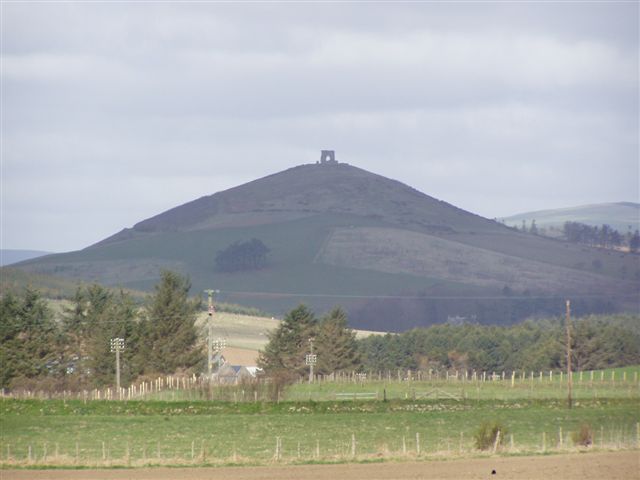The Vitrified Fort on Dunnideer
Ever since hearing about vitrification, where the rocks of various iron-age hillforts around Scotland have been fused through intense heat, I've been keen to see it for myself.
An experiment in Morven and one in East Tullos showed how this could happen - if rocks were packed with timber and peat and fired, the heat is sufficient to partially melt them.
It is unclear if vitrification was a strategy to strengthen a wall, but the experiments seem to show it was more likely that vitrification had been the result of attack and destruction. These hilltops are quiet and deserted now, and it is quite a leap of imagination to picture them being besieged, timber placed against the walls and set on fire, a beacon and warning to the surrounding countryside for miles around.
I've been to a number of prehistoric forts, looking for evidence of vitrification - but it was this weekend before I saw it for the first time, at Dunideer above Insch in Aberdeenshire. This hillfort is topped by the remains of a 13th century castle, but for me the exciting aspect were the low walls surrounding the castle, exhibiting stones that had fused together as if lava had flown between them.
Dunnideer (picture from Megalithic.co.uk):

An experiment in Morven and one in East Tullos showed how this could happen - if rocks were packed with timber and peat and fired, the heat is sufficient to partially melt them.
It is unclear if vitrification was a strategy to strengthen a wall, but the experiments seem to show it was more likely that vitrification had been the result of attack and destruction. These hilltops are quiet and deserted now, and it is quite a leap of imagination to picture them being besieged, timber placed against the walls and set on fire, a beacon and warning to the surrounding countryside for miles around.
I've been to a number of prehistoric forts, looking for evidence of vitrification - but it was this weekend before I saw it for the first time, at Dunideer above Insch in Aberdeenshire. This hillfort is topped by the remains of a 13th century castle, but for me the exciting aspect were the low walls surrounding the castle, exhibiting stones that had fused together as if lava had flown between them.
Dunnideer (picture from Megalithic.co.uk):
Comments